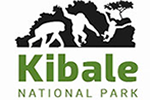Bird watching tours start at 7am at Kanyanchu; you are advised to book in advance. Rare species include the Papyrus Gonolek, White-winged Warbler, White-collared Oliveback and Papyrus Canary.
Where to Go Birding
The best bird watching spot is the Bigodi Wetland Sanctuary, where a four-hour trail has been laid out and experienced guides will be able to show you several localized species which you might otherwise overlook.
Bigodi Wetland Sanctuary, located just outside the park, is home to 138 bird species which may be seen during guided walks along the boardwalk trail and viewing platforms. These could include the White-spotted Flufftail, Yellow-spotted Barbet, Hairy-breasted Barbet, Yellow-billed Barbet, Western Nicator, Grey-winged Robin-chat, White-tailed Ant-thrush, Brown-backed Scrub-robin, Black-and-white Shrike-flycatcher, Brown-throated Wattle-eye, Superb Sunbird, Brown-crowned Tchagra, Bocage’s Bush-shrike, Black Bishop, White-breasted Negrofinch and Black-crowned Waxbill among others.
The cost of the visitation fee is more than any other park, a consideration when planning your itinerary, given the additional attractions just outside the park. It obviously doesn’t make sense to pay for park entrance and check into park accommodation then, with the 24-hour clock ticking, head off for out-of-park bird watching in the Kihingami and Magombe swamps near Sebitoli and Kanyanchu respectively. No park fee is charged for passing through the park on the Fort portal-Kamwenge road, for staying at the guesthouses in and around Bigodi, or for visiting the Bigodi Wetland Sanctuary.
Best time to travel to Kibale National Park for birding safaris
Birding/bird watching in Kibale National Park is good all year-round. But, March, April, May, September, October, November are the best months of the year to enjoy the most of birding experience in Kibale National Park. These are the rainy or wet months of the year and in November, April, even migratory birds confine in Kibale National Park.
It is also possible to embark on birding safari in Kibale National Park during the dry season which occurs in two phases- the long/extended dry spell running from June, July, August to early September and short dry season from December, January to February.
What to pack
Given the nature of Kibale, you should consider packing appropriately and always begin with essentials such as pair of binoculars, bird guide book, a good camera, a bottle of drinking water, sunglasses, insect repellents, environmentally friendly clothes, snacks, toiletries, rain jacket, daypack, safari hat, comfortable shoes, etc.
Accommodation
Several of luxury, midrange and budget accommodation options are available in Kibale including Ndali Lodge, Chimp’s Nest, Kibale Forest Camp, Chimpanzee Guesthouse, Isunga Lodge, Papaya Lake Lodge, Primate Lodge, Crater Safari Lodge, Kyaninga Lodge, Camping and others.
Getting to Kibale for birding safari
Birders on birding safaris can reach Kibale National Park by road or by air. By road, Kibale National Park is about 300kms from Kampala and this is about 5-6 hours’ drive in a comfortable 4×4 safari vehicle which is in its right mechanical conditions.
